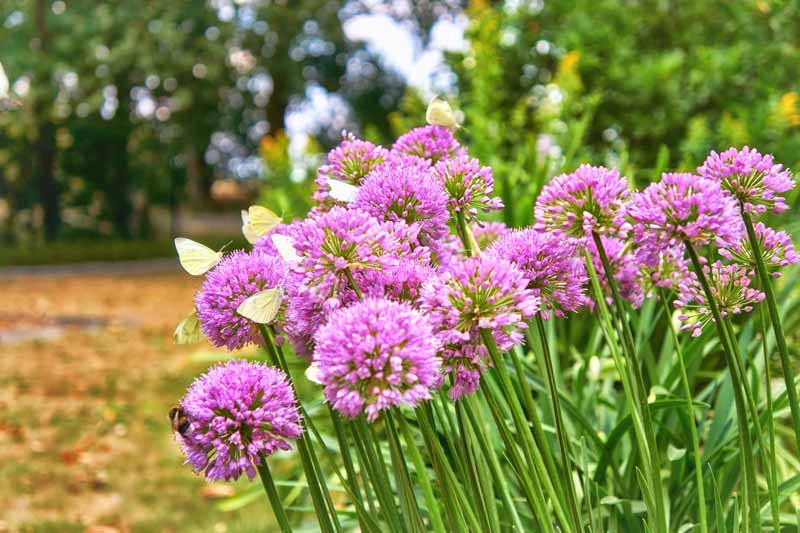Agapanthus Propagation: Tips for Expanding Your Plant Collection
Agapanthus Propagation: Tips for Expanding Your Plant Collection
Blog Article
Understanding the Art of Agapanthus Treatment: Essential Actions for Healthy And Balanced Growth and Lively Blossoms
In the realm of cultivation, the growing of agapanthus stands as a gratifying endeavor for those that look for to nurture these stylish flowering plants. With their striking blossoms and elegant foliage, agapanthus has recorded the attention of gardeners worldwide. However, achieving optimum growth and dynamic blossoms needs a nuanced method that encompasses various crucial actions. From selecting the right range to understanding trimming methods, the journey towards growing flourishing agapanthus plants is complex and holds the crucial to opening the full capacity of these organic gems.

Selecting the Right Agapanthus Variety

When picking the ideal Agapanthus range for your garden, think about aspects such as climate suitability, bloom shade, and growth routine. Furthermore, think about the climate in your area to make certain the Agapanthus selection you select can grow in your particular conditions. Understanding the development habit of various Agapanthus varieties is vital for appropriate positioning within your garden.
Ideal Growing Conditions
Taking into consideration the ideal ecological needs is important for effective Agapanthus cultivation. Agapanthus plants are delicate to cold temperatures and must be shielded from frost during wintertime months.
To make sure healthy and balanced growth and lively blossoms, plant Agapanthus light bulbs at a deepness of concerning 2-4 inches and room them 8-12 inches apart. Adding raw material, such as compost, to the soil can boost drain and fertility, promoting durable root growth. Mulching around the base of the plants aids keep wetness and reduces weed development. Routine watering is vital, specifically during the expanding season, to maintain the dirt continually wet yet not waterlogged.
Watering and Fertilizing Tips
Preserving proper dampness levels and providing essential nutrients are essential elements in the treatment regimen for Agapanthus plants. When it concerns watering Agapanthus, it is vital to strike a balance. These plants favor regularly wet dirt however are vulnerable to root rot if overwatered. During the growing season, water deeply as soon as a week, making sure the dirt is well-draining to stop waterlogging. In hotter climates or throughout periods of dry spell, more constant watering may be necessary to keep the dirt evenly moist. Nevertheless, lower watering in the wintertime to stop water logged problems.
Fertilizing Agapanthus is essential for promoting healthy and balanced development and prolific blooms. Use a well balanced fertilizer, such as a 10-10-10 formula, in the very early spring as new growth arises. Repeat this application every 6-8 weeks throughout the growing period. Prevent extreme fertilizing, as it can cause lush foliage at the cost of blossoms. Constantly adhere to the producer's directions for appropriate dilution and application techniques. By complying with these watering and fertilizing suggestions, you can ensure your Agapanthus plants flourish and generate lively, durable site web blossoms.
Trimming Strategies for Agapanthus
Trimming Agapanthus plants at the suitable times and with proper techniques is essential for keeping their health and wellness and advertising optimum development and blooming. The suitable time to prune Agapanthus is in late winter or early spring prior to new growth arises. Begin by getting rid of any yellowing or dead leaves near the base of the plant. Cut them as close to the ground as feasible without damaging the arising shoots.
For flowered stems, wait until the blooms have actually perished and after that cut them back to the base. This not just cleans up the plant's redirected here look yet also urges the advancement of brand-new blossom buds. Deadheading spent flowers can likewise reroute the plant's energy right visit this site into creating more flowers instead than setting seeds. Nevertheless, if you intend to gather seeds for proliferation, leave some blossoms to dry and fully grown on the plant.
Remember to use tidy, sharp tools to make accurate cuts and minimize the threat of introducing illness. Agapanthus. Routine pruning will help maintain your Agapanthus looking healthy and balanced and cool while making sure an abundant display of attractive blossoms
Dealing With Typical Bugs and Illness
After guaranteeing proper trimming methods for Agapanthus, it is important to address common parasites and illness that can influence the health and vigor of these plants. Agapanthus plants are typically durable yet can still fall sufferer to specific problems. One usual pest that impacts Agapanthus is the Agapanthus gall midge. This little, orange fly lays its eggs in the vegetation, bring about altered development and blossom buds that fail to open. To combat this pest, prune and damage any kind of damaged plant components and consider utilizing insecticidal soap.
Furthermore, Agapanthus plants can experience from origin rot if they are planted in poorly draining pipes dirt. By being watchful and taking punctual action against bugs and conditions, you can aid your Agapanthus plants thrive and produce lively blooms. Agapanthus.

Conclusion
In final thought, grasping the art of agapanthus treatment involves picking the best range, providing perfect planting problems, appropriate watering and feeding, suitable trimming techniques, and resolving common insects and illness. By adhering to these crucial steps, you can ensure healthy development and vivid blossoms for your agapanthus plants. Bear in mind to frequently keep track of and keep your plants to promote their general well-being and longevity.
To make sure healthy growth and vibrant blossoms, plant Agapanthus light bulbs at a deepness of regarding 2-4 inches and room them 8-12 inches apart. By complying with these watering and feeding suggestions, you can guarantee your Agapanthus plants grow and produce vivid, long-lasting flowers.
One typical insect that influences Agapanthus is the Agapanthus gall midge. In addition, Agapanthus plants can endure from root rot if they are grown in inadequately draining dirt. By following these essential actions, you can guarantee healthy and balanced growth and lively flowers for your agapanthus plants.
Report this page